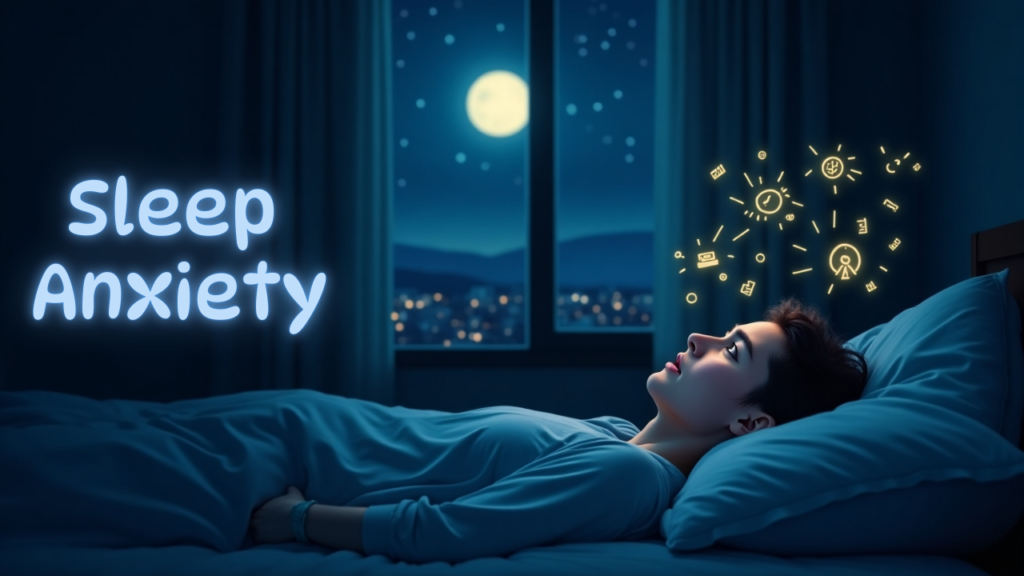Table of Contents
ToggleIntroduction
Sleep anxiety is a growing concern for many individuals, particularly in today’s fast-paced, stress-filled world. It refers to the fear or worry about not being able to fall asleep or stay asleep, which can create a vicious cycle of sleeplessness and heightened anxiety. For some, this condition becomes a nightly battle, leading to chronic sleep deprivation and a significant impact on overall well-being. In this article, we’ll explore what sleep anxiety is, its causes, symptoms, and effective strategies to manage it.
What is Sleep Anxiety?
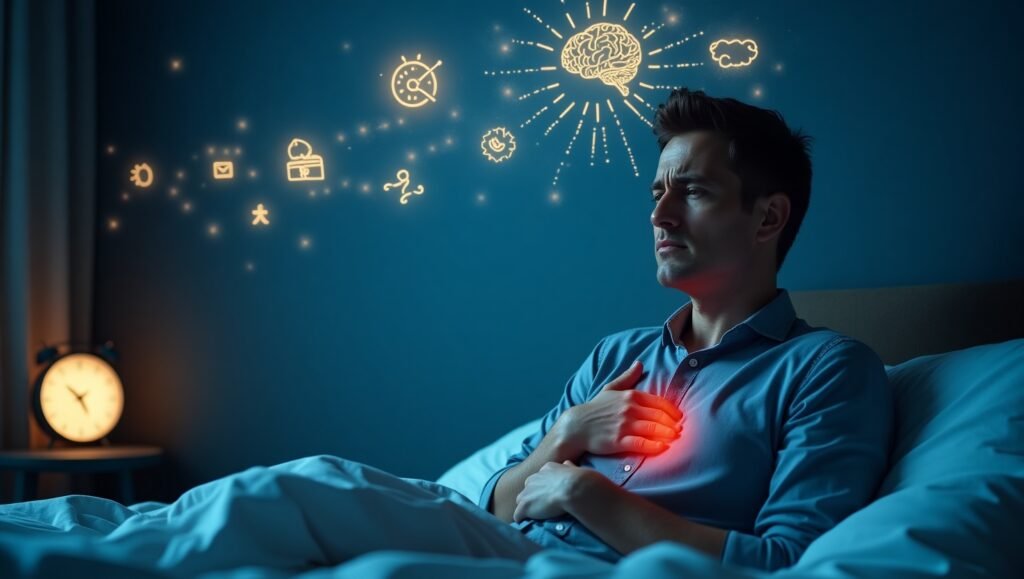
Sleep anxiety is a specific type of anxiety that revolves around the fear of not getting enough sleep or the inability to fall asleep. It often stems from a heightened awareness of the importance of sleep and the consequences of sleep deprivation. This anxiety can manifest as racing thoughts, restlessness, or even physical symptoms like a rapid heartbeat when trying to sleep. Over time, sleep anxiety can lead to a conditioned response where the mere thought of bedtime triggers stress, making it even harder to achieve restful sleep.
According to the American Sleep Association, approximately 1% of Americans experience chronic sleep anxiety, with many more reporting occasional sleep-related worries. This statistic highlights the prevalence of this issue and underscores the need for greater awareness and effective solutions. Reference: American Sleep Association
eded.
Causes of Sleep Anxiety
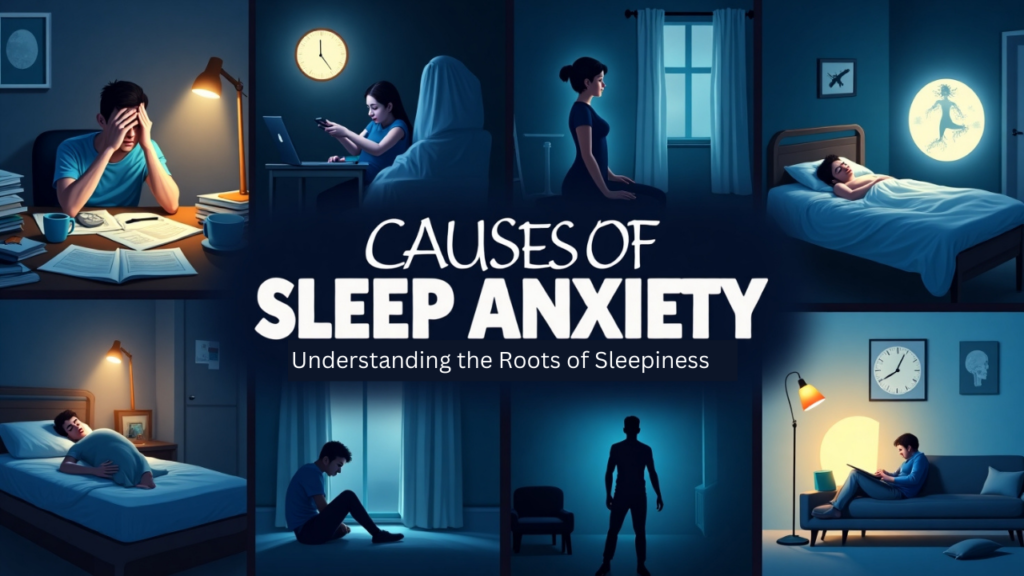
Understanding the root causes of sleep anxiety is crucial for addressing it effectively. Here are some common factors that contribute to this condition:
Stress and Overthinking: Daily stressors, such as work pressures, financial concerns, or relationship issues, can spill over into bedtime. Overthinking or ruminating on these problems can make it difficult to relax and fall asleep.
Poor Sleep Hygiene: Irregular sleep schedules, excessive screen time before bed, and consuming caffeine or alcohol late in the day can disrupt sleep patterns and contribute to anxiety.
Underlying Sleep Disorders: Conditions like insomnia, sleep apnea, or restless legs syndrome can create a fear of not being able to sleep, exacerbating sleep anxiety.
Mental Health Conditions: Anxiety disorders, depression, and PTSD are often linked to sleep disturbances, including sleep anxiety.
Lifestyle Factors: A sedentary lifestyle, lack of exposure to natural light, or an unhealthy diet can negatively impact sleep quality and contribute to anxiety.
Trauma or Negative Experiences: Past experiences of sleeplessness or traumatic events related to sleep can create a lasting fear of bedtime.
Symptoms of Sleep Anxiety
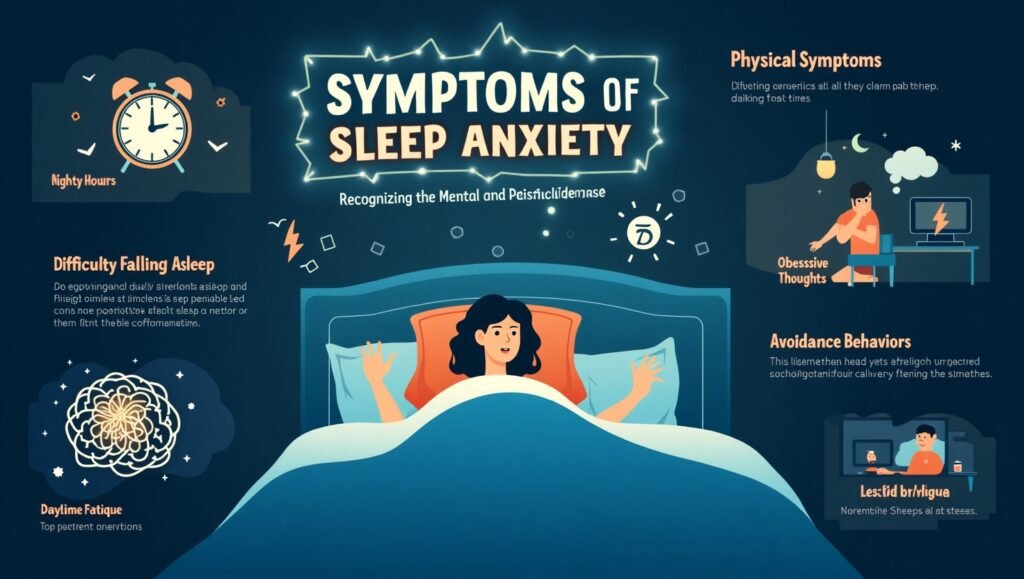
Sleep anxiety can manifest in various ways, both mentally and physically. Common symptoms include:
Difficulty Falling Asleep: Tossing and turning for hours due to racing thoughts or worry about not sleeping.
Nighttime Panic Attacks: Sudden feelings of fear or dread that wake you up or prevent you from falling asleep.
Physical Symptoms: Increased heart rate, sweating, or muscle tension when trying to sleep.
Daytime Fatigue: Feeling exhausted or irritable during the day due to lack of sleep.
Obsessive Thoughts: Constantly worrying about sleep and its impact on daily life.
Avoidance Behaviors: Delaying bedtime or avoiding sleep altogether due to fear of not being able to sleep.
The Impact of Sleep Anxiety on Health
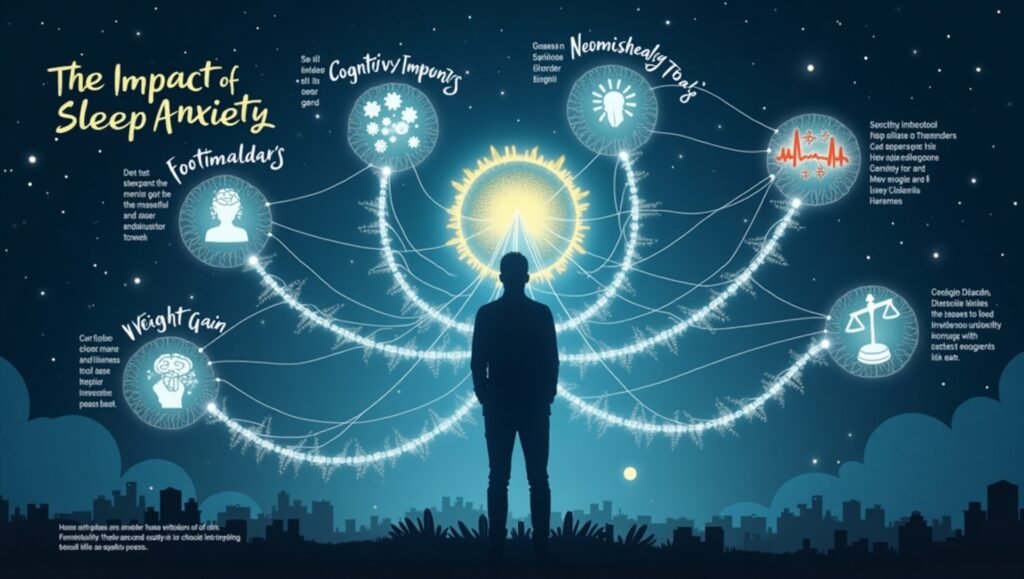
Fortunately, there are several effective strategies to manage and overcome sleep anxiety. Here are some practical tips:
1. Establish a Consistent Sleep Routine
Maintain a regular sleep schedule by going to bed and waking up at the same time daily, including weekends.
Create a calming bedtime ritual, such as reading, taking a warm bath, or practicing relaxation techniques.
2. Improve Sleep Hygiene
Reduce screen time at least an hour before bed.
Steer clear of caffeine, nicotine, and large meals in the evening.
Make sure your sleeping space is cozy, quiet, and dimly lit.
3. Practice Relaxation Techniques
Deep breathing exercises, progressive muscle relaxation, or guided meditation can help calm your mind before bed.
Apps like Calm or Headspace offer sleep-specific meditations.
4. Challenge Negative Thoughts
Cognitive-behavioral therapy (CBT) techniques can help reframe negative thoughts about sleep.
Replace worries like “I’ll never fall asleep” with positive affirmations like “I will relax and let sleep come naturally.”
5. Limit Daytime Naps
Keep daytime naps short, as extended naps can disrupt your nighttime sleep.
6. Seek Professional Help
If sleep anxiety persists, consider consulting a sleep specialist or therapist. Cognitive-behavioral therapy for insomnia (CBT-I) is particularly effective for treating sleep-related anxiety.
7. Stay Active
Regular physical activity can improve sleep quality and reduce anxiety. However, avoid vigorous exercise close to bedtime.
8. Use Sleep Aids Wisely
Over-the-counter sleep aids or prescription medications should only be used under medical supervision, as they can have side effects and may not address the root cause of sleep anxiety.
Conclusion
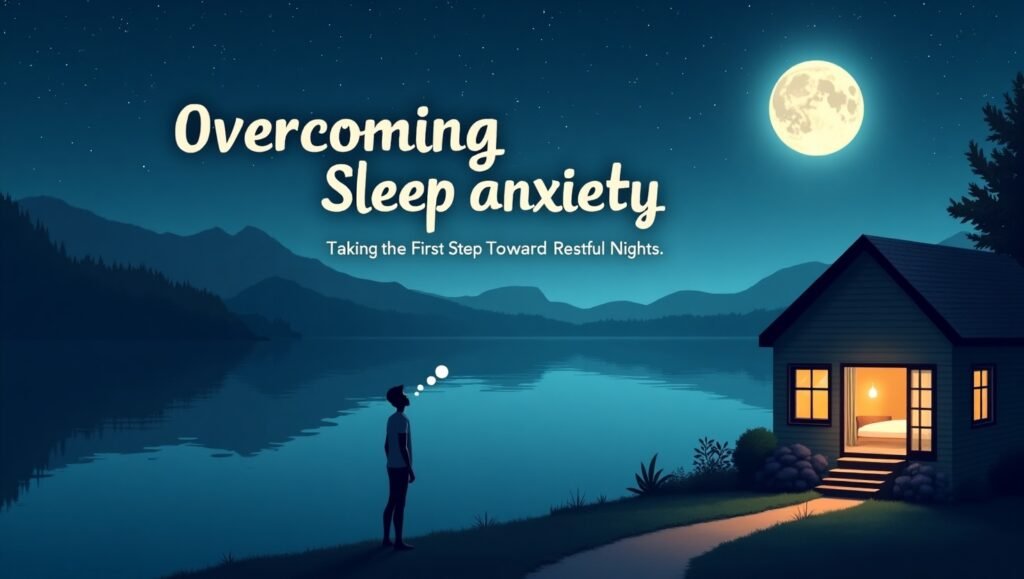
Sleep anxiety is a challenging condition that can significantly impact your quality of life. However, with the right strategies and support, it is possible to break the cycle of sleeplessness and anxiety. By addressing the underlying causes, improving sleep hygiene, and seeking professional help when needed, you can regain control over your sleep and overall well-being. Remember, you’re not alone in this struggle, and help is available. Prioritize your sleep, and take the first step toward a more restful and anxiety-free night.
If you or someone you know is struggling with sleep anxiety, don’t hesitate to reach out to a healthcare professional for guidance. Sleep is a vital component of health, and addressing sleep anxiety is an investment in your long-term well-being.

